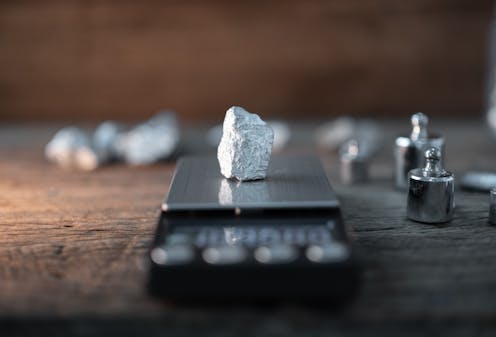Humanity needs more rare earth elements. Extinct volcanoes could be a rich new source
- Written by Michael Anenburg, Research Fellow in Earth Sciences, Australian National University

Extinct volcanoes are hard to study – we never see them erupt. Using a unique experimental technique, we were able to recreate a certain type of extinct volcano in a lab, learning more about the magma these volcanoes produce.
We found that some rare magma types are surprisingly efficient at concentrating rare earth elements. This is a group of metals with crucial applications in several high-tech industries, such as magnets for electric vehicles and wind turbines.
Demand for rare earths is soaring as society moves away from fossil fuels and electrifies energy production and transport. Despite the name, rare earths aren’t particularly rare. The biggest challenge is finding rocks in which these metals are concentrated enough to be economically viable to extract.
Our new research, published in the journal Geochemical Perspectives Letters, shows certain extinct volcanoes are a great place to look.
Iron-rich magma in extinct volcanoes
There is an enigmatic type of magma that contains unusually large amounts of iron. It is so rare, no eruptions featuring this type of magma have happened in recorded history.
Instead, it is only known from extinct volcanoes that were active many millions of years ago.
The most famous example of such a volcano is El Laco in Chile. Another notable example is Kiruna in Sweden, mined for iron ore for many decades. Last year, its operating company LKAB announced Kiruna as the largest rare earths resource in Europe.
The discovery at Kiruna made us (and many others) wonder why there would be a rare earth resource at a volcanic iron mine. We already know of many other rock types containing rare earths, and none of them are like Kiruna and other extinct iron-rich volcanoes.
Was this just a geological serendipity, or is there something inherent to iron-rich magmas that make them rare-earth rich, too? After all, many of those iron-rich extinct volcanoes are known, but no one ever bothered to check whether they have a rare earth resource in them.
Additionally, iron-rich rocks are often easy to find because of their strong magnetic signal, despite their rarity. Should they be added to the target list of rare earth explorers?
Recreating volcanism in a bottle
To test this hypothesis, we used a machine called a piston cylinder. We put synthetic material akin to volcanic rocks and magmas into small capsules or “bottles” made of noble metals such as platinum. We then pressurised them to depths equivalent to 15 kilometres deep in Earth’s crust and heated them up to 1,100°C, melting them into a liquid.
At these extreme conditions, we found the iron-rich magma exists as bubbles inside a more common magma type known from virtually all modern active volcanoes. The iron-rich magma absorbs rare earths from the surrounding liquid.
These iron-rich bubbles will have a different density and viscosity, and will separate from their iron-poor environment, similar to how water and oil mixed together will eventually separate into distinct layers.
Iron-rich magmas absorb the rare earths so efficiently, their rare earth contents are almost 200 times greater than the regular magmas around them.
This means the discovery at Kiruna wasn’t an accident. It’s something we can expect from most, if not all, iron-rich volcanoes.
Why do we need more rare earth deposits?
Production of rare earth elements is concentrated in just a handful of countries – mostly China, along with the United States, Myanmar and Australia.
Rare earths are therefore classified as “critical minerals”: they have important uses, but suffer from a supply chain risk due to geopolitical factors.
As demand for rare earths has surged, this has led to substantial investment in research and exploration for additional deposits. The more deposits are known, the better industry can pick deposits that will yield rare earths at the lowest financial, environmental and societal cost.
Extinct iron-rich volcanoes are often mined for iron ore. Our results indicate existing mines at such locations can potentially be modified to produce rare earths as well.
This would be a positive outcome – an existing mining operation can gain additional value. In some cases, mine waste can be reprocessed to extract these critical metals. This would mean new mines for rare earth elements may not even be required, preventing unnecessary disruption of natural environments.
Authors: Michael Anenburg, Research Fellow in Earth Sciences, Australian National University





